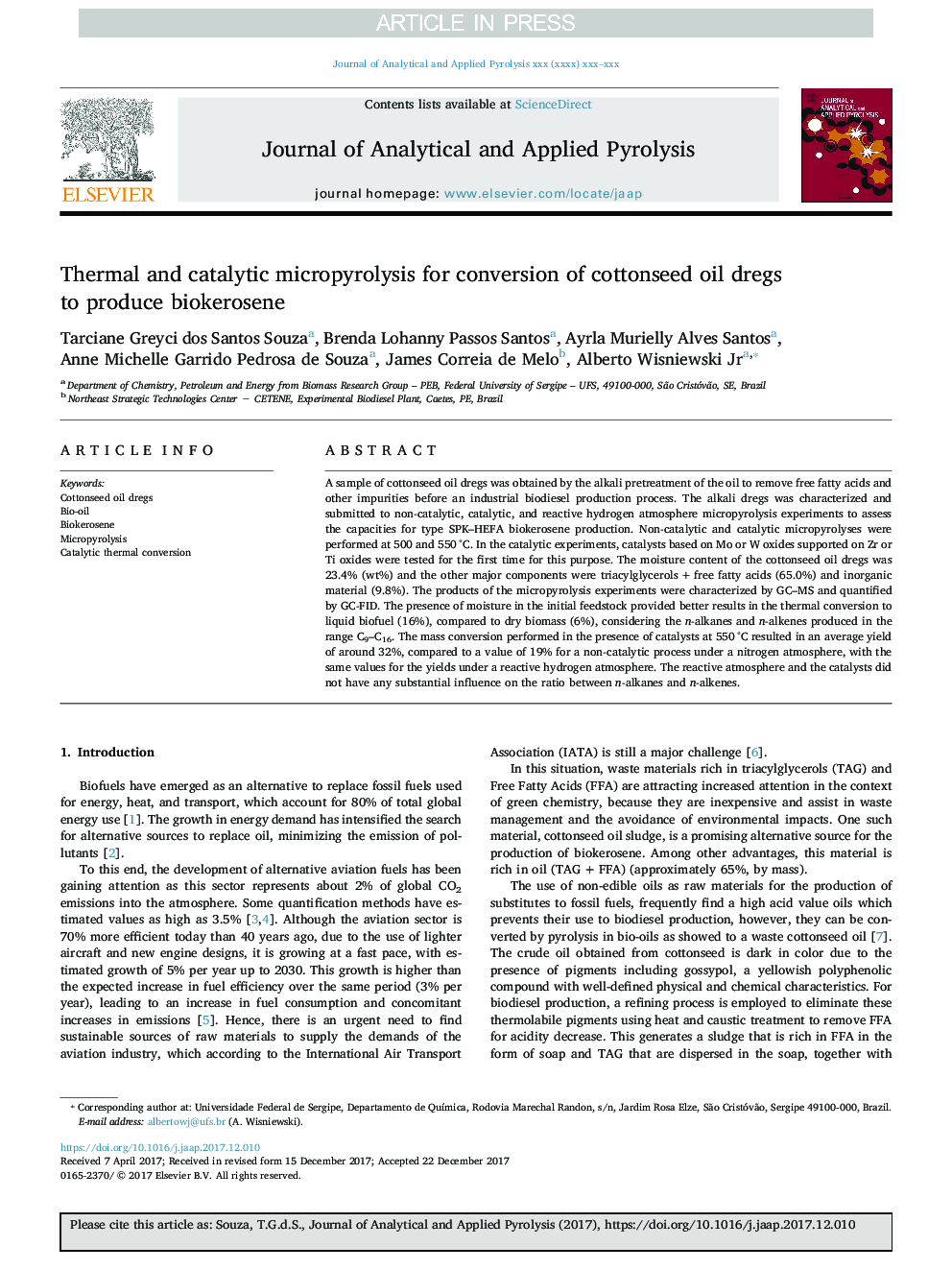| Article ID | Journal | Published Year | Pages | File Type |
|---|---|---|---|---|
| 7606378 | Journal of Analytical and Applied Pyrolysis | 2018 | 8 Pages |
Abstract
A sample of cottonseed oil dregs was obtained by the alkali pretreatment of the oil to remove free fatty acids and other impurities before an industrial biodiesel production process. The alkali dregs was characterized and submitted to non-catalytic, catalytic, and reactive hydrogen atmosphere micropyrolysis experiments to assess the capacities for type SPK-HEFA biokerosene production. Non-catalytic and catalytic micropyrolyses were performed at 500 and 550â¯Â°C. In the catalytic experiments, catalysts based on Mo or W oxides supported on Zr or Ti oxides were tested for the first time for this purpose. The moisture content of the cottonseed oil dregs was 23.4% (wt%) and the other major components were triacylglycerolsâ¯+â¯free fatty acids (65.0%) and inorganic material (9.8%). The products of the micropyrolysis experiments were characterized by GC-MS and quantified by GC-FID. The presence of moisture in the initial feedstock provided better results in the thermal conversion to liquid biofuel (16%), compared to dry biomass (6%), considering the n-alkanes and n-alkenes produced in the range C9-C16. The mass conversion performed in the presence of catalysts at 550â¯Â°C resulted in an average yield of around 32%, compared to a value of 19% for a non-catalytic process under a nitrogen atmosphere, with the same values for the yields under a reactive hydrogen atmosphere. The reactive atmosphere and the catalysts did not have any substantial influence on the ratio between n-alkanes and n-alkenes.
Keywords
Related Topics
Physical Sciences and Engineering
Chemistry
Analytical Chemistry
Authors
Tarciane Greyci dos Santos Souza, Brenda Lohanny Passos Santos, Ayrla Murielly Alves Santos, Anne Michelle Garrido Pedrosa de Souza, James Correia de Melo, Alberto Jr,
